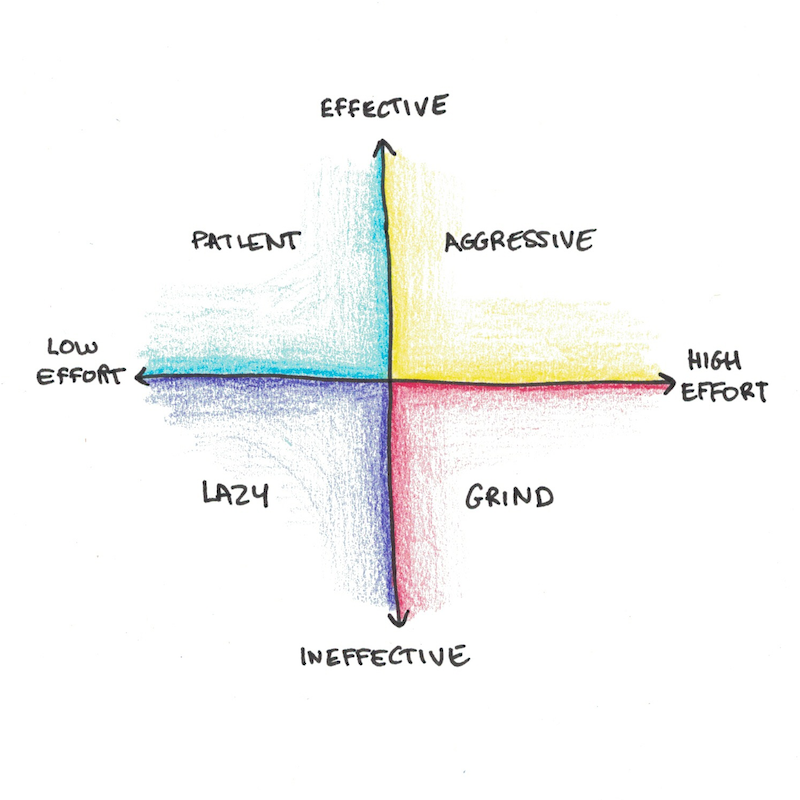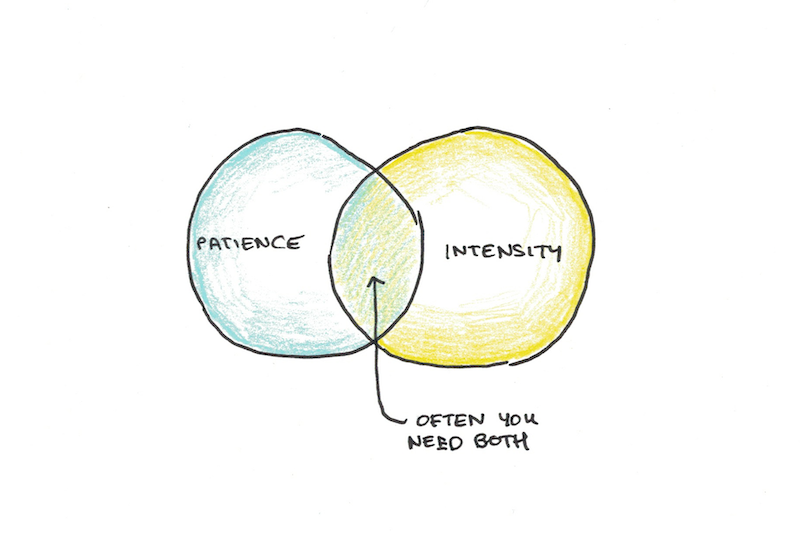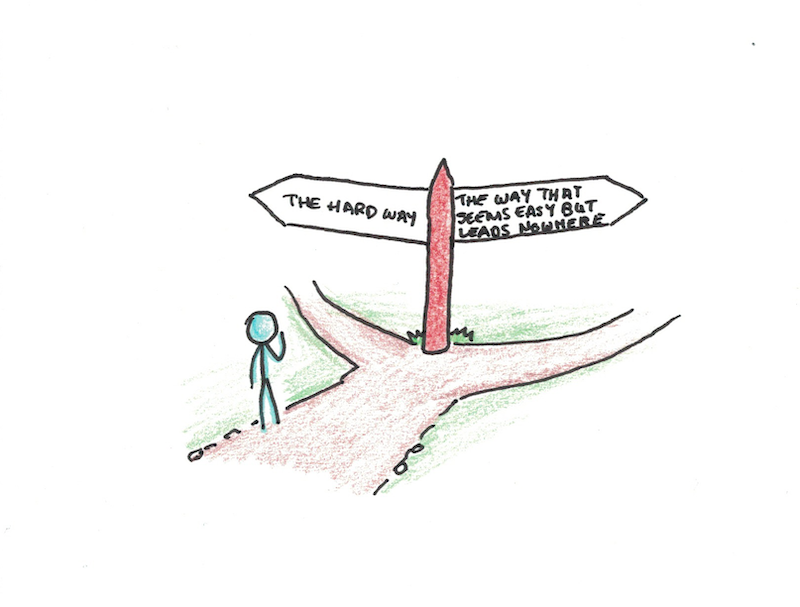A common misunderstanding is to confuse an effective strategy with a merely effortful one.
Effective strategies are usually effortful. It’s rare that something is both effective and effortless. If you’re doing the real thing, it’s going to require some work.
But the real thing done slowly and patiently is still the real thing. A fake substitute done furiously is still fake activity. Intensity does not turn a bad plan into a good one.

Effectiveness is What You Do. Effort is How Much.
Let’s look at an example:
One of the most effective ways you can study is through active recall. This means, when you study, you close the book and try to remember. This works better than merely looking at the text over and over again.
Active recall is effortful. It’s a mental strain to retrieve barely remembered information. But active recall is the real thing because it’s what you need to do on the actual test. The book won’t be open for you to look at. The way to get better at remembering is by practicing remembering.
Once you’ve chosen to study with active recall, however, the level of intensity is up to you. You could study thirty minutes a day or thirteen hours a day. Intensity may vary dramatically without changing the core strategy.
In choosing how to study, you see there are two decisions: what to do and how much. Doing the real thing is about this first decision.
How Intense is the Hard Way?
Earlier I claimed that the hardest things are often the easiest once we’re fully committed to them. But this raises a question: is the hard way mostly about effectiveness or effort?
Both are important, but effectiveness is the aspect to be most careful about. The hard way can often still be trodden with a slow and patient pace. But walk a fake path and you end up going nowhere.
If a pursuit has a deadline, or steep costs to keep going, a wimpy effort won’t do. A start-up only survives as long as there is cash. Going slow means death if your burn rate is high. In this case the hard way is not only steep, it must be summited at the proper pace or not at all.
However, a bootstrapped lifestyle business may be viable for years. It took me seven to start mine. Effort was always required, but patience was a more important ingredient than haste.
Patience, however, is often painted in contrast to intensity. As if the choice were between easy and long versus hard and brief. However the truth for many ambitions is that the only viable way forward is both long and hard. Patience plus obsession, and even then it might not be enough.

Failures of Ignorance and Irresoluteness
What works will depend on your destination. You might strive hard on a path that you only later realize is a dead-end. That’s okay.
Finding the effective path is much of what makes ambitious goals difficult. You can reduce the risk by talking to people who know the terrain, reading a lot and just trying stuff out. But, if you’re committed to this process it’s rare you’ll remain lost for long.
Irresoluteness is a different sin. You know the true path, you just ignore it. You pretend that hard things can be achieved with half efforts. This is an attitude that doesn’t self-correct. Begin with a self-deception, and no amount of new knowledge can change your mind.
Side Note: This essay is my 1400th entry to this website, over 14 years of writing. Whatever your path ahead, keep at it!



 I'm a Wall Street Journal bestselling author, podcast host, computer programmer and an avid reader. Since 2006, I've published weekly essays on this website to help people like you learn and think better. My work has been featured in The New York Times, BBC, TEDx, Pocket, Business Insider and more. I don't promise I have all the answers, just a place to start.
I'm a Wall Street Journal bestselling author, podcast host, computer programmer and an avid reader. Since 2006, I've published weekly essays on this website to help people like you learn and think better. My work has been featured in The New York Times, BBC, TEDx, Pocket, Business Insider and more. I don't promise I have all the answers, just a place to start.